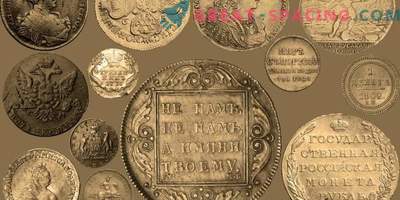
Surely, even those people who have never been particularly interested in world history, have at least once heard the mention of Eldorado. This is an ancient South American country, which, despite its popularity among conquistadors, is still considered mythical. For the sake of her search, large-scale expeditions were organized, huge resources were wasted, although this is a small area with a rather primitive tribe. Where does this importance come from? Everything becomes clear if you speak Spanish at least a little. The word “El Dorado” translates as “golden”, and the country itself is considered a tasty morsel, because practically everything in it, from stones in buildings to dishes, is made of pure gold. Agree that for the sake of such wealth is not a pity to risk life.
Gold is a soft yellow metal. If you look at it from a chemical point of view, it is the natural material of our planet, created in its depths. That is, it can be equated to any element in the periodic table from the perspective of the study. But history shows that its significance, including the value of the properties of gold for humanity, are much higher. No wonder that this metal received the prefix “noble”. Considered as such because of its rarity and historical accent. From ancient times it began to be considered as an exchange currency, when there was no paper equivalent yet. With the advent of the printed money option, gold bars became a stock confirming the value of a currency. Interestingly, the use of gold has translated humanity into the age of metals. The most ancient finds date back to 4600 BC. e., so people are in close contact with gold in all respects for more than 6,500 years. If we trace the history of the world for thousands of years, then gold will rise to the pedestal of human values. For the ancient peoples who worshiped the Sun (Greeks, Egyptians, etc.), this metal was deified because of its yellow color.
Tribes, countries, governments, and cultures arose and went into oblivion. Rulers, nations, currency changed, but gold managed to maintain its stability up to our days and is perceived with the same reverence as thousands of years ago. Is it possible to find a metal that has managed to retain its purchasing power for more than 5,000 years?
Naturally, we now have a reliable banking system, protective bodies and other structures that protect owners from theft. In the ancient world, a whole state could incur the risk of war if it owned too much stock. But we owe it to gold to the progress movement, because on its basis the monetary system and modern principles of capitalism were created. Do not forget about such a phenomenon as the gold rush. People not only mined gold, but also mastered and settled new territories. Many cities owe their existence to the presence of gold in their ancient lands. Gold continues to be widely used in the modern world. Approximately 10% is in industrial products, and the rest is given to centralized stocks and to individuals in the form of ingots and jewelry equivalent. It is important to point out that the latter are not based on pure gold, but from alloys with other metals in order to increase the level of resistance.
Where else do they use gold? This metal is not subject to corrosion, so it is very popular for investing. This is confirmed by the fact that its quantity was practically not lost during cataclysms. Manipulations included only melting processes. Gold has long been used as money. Many cultural specimens in the form of gold coins have survived to the present day. But only in the 19th century it became something official. If viewed from an industrial point of view, then there are gold conductors, printed plans, connectors and contact surfaces. Metal covers mirrors operating in the far infrared range. Sheath covered in gold in a neutron bomb.
Gold is found in dentistry (dentures and crowns), as well as pharmacology, where it is used to treat diseases such as rheumatoid arthritis and tuberculosis. Surprisingly, his tracks stretch into the food industry as an additive E175.










































